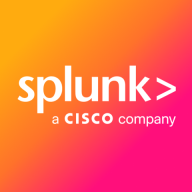

Splunk Observability Cloud and FortiMonitor operate in the infrastructure and application monitoring space. FortiMonitor offers a broader range of comprehensive features, whereas Splunk Observability Cloud is appealing due to its user-friendly nature, which reflects positively on its pricing and support.
Features: Splunk Observability Cloud provides real-time data analytics, machine learning-powered insights, and strong cloud-native support. FortiMonitor excels in network performance monitoring, IT infrastructure management, and emphasizes security operations.
Room for Improvement: Splunk Observability Cloud could enhance its capabilities by expanding security-focused features, improving integration with diverse on-premises solutions, and offering more transparent cost estimation tools. FortiMonitor might benefit from increasing its user interface simplicity, speeding up deployment times, and enhancing compatibility with latest third-party technologies.
Ease of Deployment and Customer Service: Splunk Observability Cloud streamlines deployment with extensive integration options and offers proactive support, prioritizing scalability for cloud platforms. FortiMonitor is easy to implement in existing network frameworks, providing robust assistance via its security operations expertise, specializing in traditional infrastructure support.
Pricing and ROI: Splunk Observability Cloud's flexible pricing is appealing for dynamic growth, enhancing ROI through efficient data insights. FortiMonitor's competitive pricing strengthens ROI prospects for security-heavy investments, offering immediate benefits for organizations prioritizing security and monitoring capabilities.
| Product | Market Share (%) |
|---|---|
| Splunk Observability Cloud | 1.3% |
| FortiMonitor | 0.8% |
| Other | 97.9% |

| Company Size | Count |
|---|---|
| Small Business | 8 |
| Midsize Enterprise | 2 |
| Large Enterprise | 6 |
| Company Size | Count |
|---|---|
| Small Business | 20 |
| Midsize Enterprise | 10 |
| Large Enterprise | 46 |
FortiMonitor is a comprehensive, SaaS-based digital experience monitoring (DEM) platform that helps organizations modernize their performance-monitoring tools. It provides visibility into endpoint application performance and digital experience—no matter where the user resides or where the application is hosted.
Splunk Observability Cloud offers sophisticated log searching, data integration, and customizable dashboards. With rapid deployment and ease of use, this cloud service enhances monitoring capabilities across IT infrastructures for comprehensive end-to-end visibility.
Focused on enhancing performance management and security, Splunk Observability Cloud supports environments through its data visualization and analysis tools. Users appreciate its robust application performance monitoring and troubleshooting insights. However, improvements in integrations, interface customization, scalability, and automation are needed. Users find value in its capabilities for infrastructure and network monitoring, as well as log analytics, albeit cost considerations and better documentation are desired. Enhancements in real-time monitoring and network protection are also noted as areas for development.
What are the key features?In industries, Splunk Observability Cloud is implemented for security management by analyzing logs from detection systems, offering real-time alerts and troubleshooting for cloud-native applications. It is leveraged for machine data analysis, improving infrastructure visibility and supporting network and application performance management efforts.
We monitor all Network Monitoring Software reviews to prevent fraudulent reviews and keep review quality high. We do not post reviews by company employees or direct competitors. We validate each review for authenticity via cross-reference with LinkedIn, and personal follow-up with the reviewer when necessary.